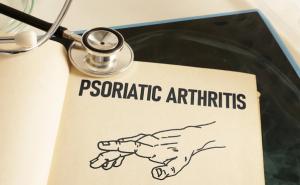Dr Mark Bleackley Addresses Lack of Pharmacotherapies in OSA, Need for IHL-42X
Mark Bleackley, PhD, chief scientific officer of Incannex, discusses in further detail the need for a pharmacotherapy like IHL-42X in obstructive sleep apnea (OSA) and the medication's underlying mechanisms.
In
Part 2 of this interview expands on this discussion to detail the unmet need IHL-42X confronts for patients with OSA. Bleackley also sheds light on the underlying mechanism of the novel medication to explore how IHL-42X works against the pathophysiology of OSA.
This transcript has been lightly edited for clarity.
Transcript
Can you provide some context for the need that IHL-42X is addressing in patients with obstructive sleep apnea?
So, the real driver behind this is that there are no pharmacotherapies available for obstructive sleep apnea. The treatments that are currently available are devices. The standard of care is positive airway pressure, which is a mask that is worn over your nose and your mouth that pumps air into your airway and dramatically splints it open. It works very well. But patients don't like using it; the compliance rates are probably around 50%, maybe lower. So even though there is an option there, most people aren't using it.
The knowledge that that is the treatment that is going to be prescribed also leads a lot of patients to not have their sleep apnea diagnosed. If they know there's no solution, there's sort of no reason to go in to see a sleep physician and get diagnosed. There are other options out there as well. There's oral devices, so mouthguard-type devices that can help, but again, the compliance rates aren't great. There are people that will opt for surgery, which supports how serious of a condition this is, but this involves removing tissue from the upper airway. And again, the success rates: it's not a cure, it's a treatment. So there really is a need out there for pharmacotherapies that provide a relatively straightforward solution in the form of a pill or drug product that you can take every night and provides that pharmacotherapy option. So, there is there is a real unmet need in the in the pharmacotherapy space.
What is the underlying mechanism at work in IHL-42X and how does it interact with the pathophysiology of obstructive sleep apnea?
When we look at what happens in obstructive sleep apnea, it's interruptions to the breathing during sleep; the obstructive form of the diseases is where the upper airway collapses. So, you normally have your airway is a pipe hose. As it collapses repeatedly during sleep, that disrupts your breathing, it decreases oxygen uptake, and that leads to a poor sleep quality. You get the consequences the next day of cognitive impairment, you're tired, that can affect your mood. And there's long-term health consequences. You have an increased risk of cardiovascular disease, some mental health disorders and cognitive function issues.
So, when we look at it, what we're really trying to do is prevent that collapse from happening and induce the body to take a breath sooner so you don't have that low oxygen saturation during sleep.
What we've done with IHL-42X is we've combined 2 drugs that target different components of sleep apnea. The first is dronabinol, which is a synthetic form of THC [tetrahydrocannabinol]. This activates muscles in the upper airway, which actually causes them to stay open more, preventing that collapse physiologically. We've combined dronabinol with another drug called acetazolamide, which is a drug that's been used since the 1950s for a range of indications, and it's a carbonic anhydrase inhibitor. So, it inhibits the interconversion of carbon dioxide to bicarbonate in the blood, which essentially changes the acidosis, which induces your body to take a breath sooner, so less CO2 has to build up in your body, in your blood, to induce the taking of a breath. So, we're targeting 2 different massive mechanisms of the physiology of sleep apnea. And that's the hypothesis behind IHL-42X: these 2 drugs will have a synergistic effect, leading us to have an efficacious and safe drug. And targeting those 2 different physiological pathways gives us the efficacy and the safety that we need.
Newsletter
Stay ahead of policy, cost, and value—subscribe to AJMC for expert insights at the intersection of clinical care and health economics.
Related Articles
 Climate Change Impacts Allergy Health Risks: Gary Falcetano, PA-C, AE-C
Climate Change Impacts Allergy Health Risks: Gary Falcetano, PA-C, AE-CSeptember 18th 2025
 Promising Early Efgartigimod Response Data for Generalized Myasthenia Gravis
Promising Early Efgartigimod Response Data for Generalized Myasthenia GravisSeptember 18th 2025
 Iron Dysregulation Linked to MS Progression, Review Finds
Iron Dysregulation Linked to MS Progression, Review FindsSeptember 18th 2025
 Metabolic Issues More Common in Patients With HIV
Metabolic Issues More Common in Patients With HIVSeptember 18th 2025
 Barriers to Gender-Affirming Surgery Persist Despite High Satisfaction Rate
Barriers to Gender-Affirming Surgery Persist Despite High Satisfaction RateSeptember 18th 2025
















































